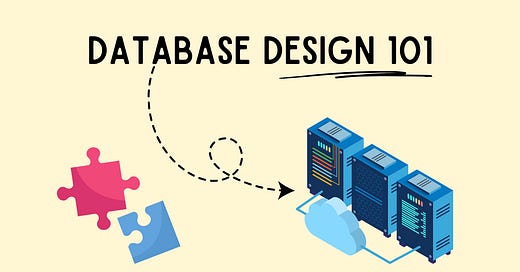Database Design 101: Key Concepts for Building Efficient, Scalable Systems
Learn essential database design principles, from primary keys to relationships, to build efficient, scalable systems that grow with your project's needs.
If you’re building anything that relies on data, having a good database setup is key. The goal here is to make sure data is saved in a way that’s both tidy and easy to pull up whenever you need it.
Over the last few articles I’ve been building up to this stage here of Database Design. I haven’t fully covered it yet as I’be been introducing key concepts and the basics to get you to this point here.
In this article, I’ll break down the basics of setting up a database, including making tables, linking them together, and understanding core design ideas. We’ll do all this using Python and SQL, so you’ll see how the code works step-by-step.
Each week, I dive deep into Python and beyond, breaking it down into bite-sized pieces. While everyone else gets just a taste, my premium readers get the whole feast! Don't miss out on the full experience – join us today!
Whether you're working with a small SQLite database or a bigger database system, learning about things like primary keys, foreign keys, and how to keep your data streamlined (called normalization) is super important.
By the end, you'll feel confident using Python with SQL to set up databases that are both organized and efficient while having a solid grasp on multi table databases with foreign keys along with all the concepts I mentioned there above.
If you haven’t subscribed to my premium content yet, I highly encourage you to do so. You gain full access to all of these articles and all the code that comes with them, so you can follow along!
Plus, you’ll get access to so much more, like monthly Python projects, in-depth weekly articles, the '3 Randoms' series, and my complete archive!
This is the fourth article in our SQL in Python series. Check out the new roadmap for SQL in Python and join premium to access the full archive, learning resources, and more to help you really build a strong foundation!
I spend a lot of my week on these articles, so if you find it valuable, consider joining premium. It really helps me keep going and lets me know you’re getting something out of my work!
If you’re already a premium reader, thank you from the bottom of my heart! You can leave feedback and recommend topics and projects at the bottom of all my articles.
👉 If you get value from this article, please help me out and leave it a ❤️. This helps more people discover this newsletter on Substack! Thank you so much!
In case you want to check out the full SQL in Python series here. Now, let’s get to it Nerd Nook crew!
Keep reading with a 7-day free trial
Subscribe to The Nerd Nook to keep reading this post and get 7 days of free access to the full post archives.





